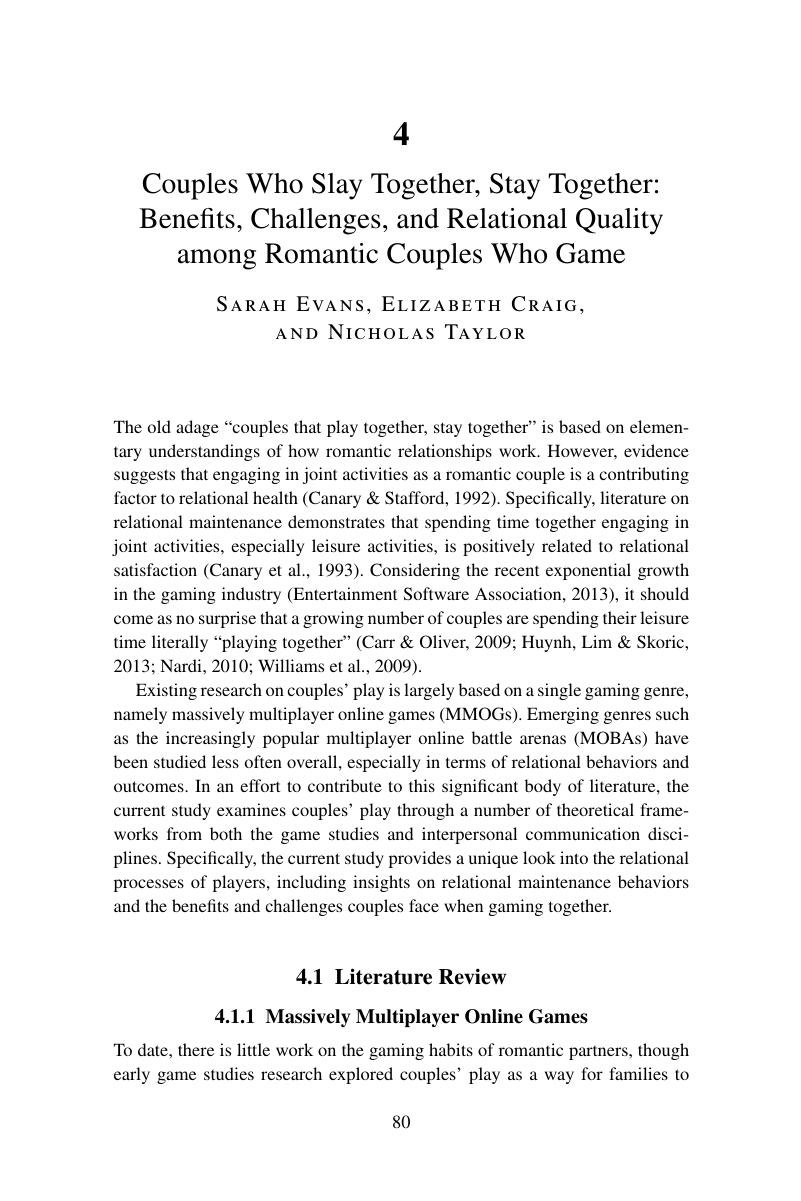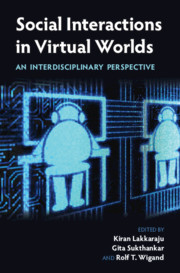Book contents
- Social Interactions in Virtual Worlds
- Social Interactions in Virtual Worlds
- Copyright page
- Contents
- Contributors
- Introduction
- Part I Individual Behaviors and Dyadic Relationships
- 1 VERUS: A Multidisciplinary International Behavioral Study of Virtual World Users
- 2 Understanding Aggressive and Nonaggressive Individual Behaviors in Massively Multiplayer Online Games
- 3 From Good Associates to True Friends: An Exploration of Friendship Practices in Massively Multiplayer Online Games
- 4 Couples Who Slay Together, Stay Together: Benefits, Challenges, and Relational Quality among Romantic Couples Who Game
- Part II Groups: Norms, Leadership, and Virtual Organizations
- Part III Understanding Culture with Games
- Part IV Techniques for Analyzing Game Data
- References
4 - Couples Who Slay Together, Stay Together: Benefits, Challenges, and Relational Quality among Romantic Couples Who Game
from Part I - Individual Behaviors and Dyadic Relationships
Published online by Cambridge University Press: 15 June 2018
- Social Interactions in Virtual Worlds
- Social Interactions in Virtual Worlds
- Copyright page
- Contents
- Contributors
- Introduction
- Part I Individual Behaviors and Dyadic Relationships
- 1 VERUS: A Multidisciplinary International Behavioral Study of Virtual World Users
- 2 Understanding Aggressive and Nonaggressive Individual Behaviors in Massively Multiplayer Online Games
- 3 From Good Associates to True Friends: An Exploration of Friendship Practices in Massively Multiplayer Online Games
- 4 Couples Who Slay Together, Stay Together: Benefits, Challenges, and Relational Quality among Romantic Couples Who Game
- Part II Groups: Norms, Leadership, and Virtual Organizations
- Part III Understanding Culture with Games
- Part IV Techniques for Analyzing Game Data
- References
Summary

- Type
- Chapter
- Information
- Social Interactions in Virtual WorldsAn Interdisciplinary Perspective, pp. 80 - 100Publisher: Cambridge University PressPrint publication year: 2018
References
- 2
- Cited by



